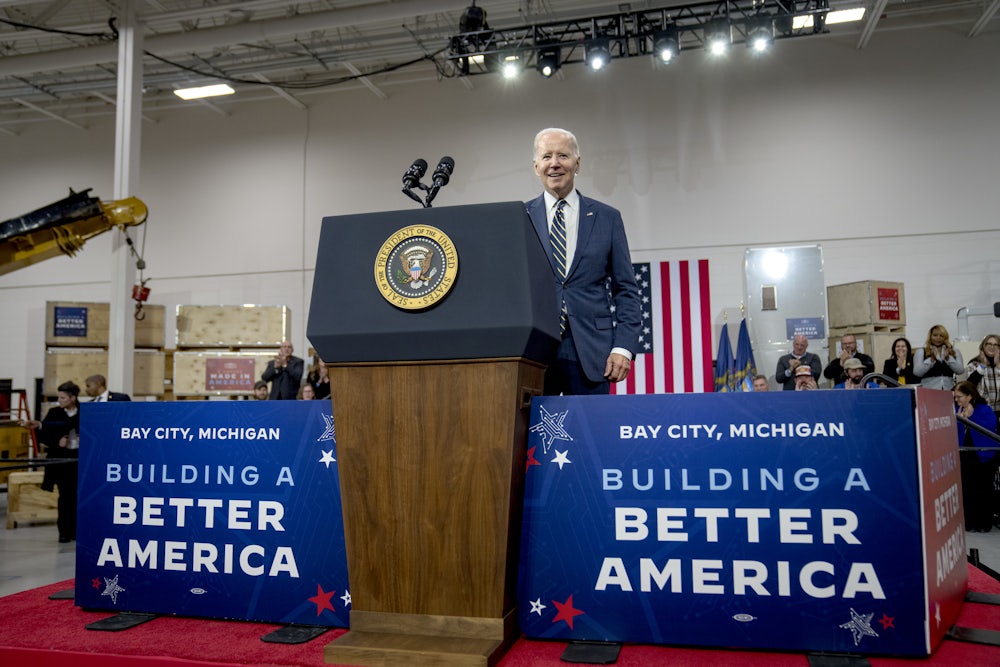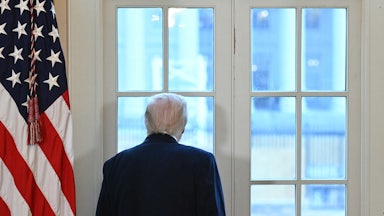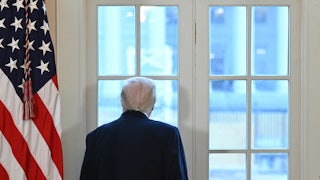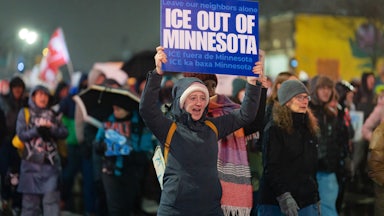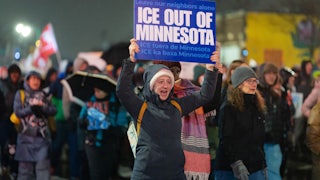If you’re a Michigan diehard, here’s the argument you’re making right now as the state’s delegation fights to move up its position in the Democratic presidential primary pecking order: Michigan checks all the boxes. It’s a battleground state. It’s diverse. It has both rural and urban areas. It’s a state where Democrats have shown they can win in recent years, while neighboring Ohio, won twice by Barack Obama, has become more and more Republican with every election. It’s fertile ground for rising star Democrats. And it’s a state where, as of this last midterm election, Democrats now control the state House, Senate, and governor’s mansion for the first time in 40 years.
In a nutshell, the pitch Michigan lawmakers and Democrats are making at key meetings this week is that everything Democrats are looking for in a primary state—everything that the current states don’t have—Michigan has. The Democratic National Committee’s panel charged with approving changes to the primary calendar, the Rules and Bylaws Committee, will meet to vote on which states should lead the primary calendar going forward.
The competition among a small handful of states over the last few months has been intense, but going into the upcoming meeting Michigan has emerged as a front-runner, alongside Minnesota, to bump up its position, replacing Iowa in the order.
“It’s the quintessential battleground state,” Brandon Dillon, a former Michigan Democratic Party chairman, said. “No Democratic candidate for president is going to be elected president without the state of Michigan. That doesn’t hold true for New Hampshire. Michigan also is a microcosm of the entire country. We have urban centers. Ag is industry here. Tourism. This is the home of the new generation of E.V. bills that are a priority for Democrats and the Biden administration.”
Dillon also said he thought it’s time to move past the idea of not having an early primary state with a significant African American population. He said that’s “a terrible idea”—a clear dig at very white Iowa and probably also at Nevada, which touts its large Latino electorate but whose Black population is about two-thirds the size of Michigan’s.
Throughout this process, one knock on Michigan has been that it’s actually too big and expensive for a long-shot candidate to break through. But these days, presidential candidates can break through if they don’t start out with a massive war chest or high name recognition (although those can help). It’s more a matter of going viral online and getting the attention of early primary activists. Bernie Sanders proved that in 2016, and other candidates followed in 2020—Sanders again, Elizabeth Warren, and others.
Mark Schauer, a former Michigan congressman and the Democratic nominee for governor in 2014, pushed back on the idea that Michigan is too big geographically or media market–wise for anyone but a top-tier presidential candidate to compete. “From the extreme western parts of the [Upper Peninsula] to Detroit or Southeast Michigan, that’s a long way. But look, the voters are fairly concentrated, and the state gives the candidate an opportunity to talk to voters of all types,” Schauer said. “Michigan is not California or Texas. It’s a big state, but … having campaigned statewide in Michigan, I think it’s a perfect fit.”
Schauer’s argument gets at a key dynamic of the changing campaign landscape. The biggest states are still cost-prohibitive to upstart or long-shot candidates. But Michigan doesn’t have multiple expensive media markets. It has one, Detroit, and even it ranks just fifteenth among U.S. media markets. It’s a big state but one with a healthy grassroots network of Democrats—as well as a heavy union presence—that any candidate, under the right conditions, could win over early on in the primary season.
At first blush, Michigan and Minnesota look kind of similar. They both are large Midwestern states with voters who have elected Democrats to trifecta control over the governor’s mansion and statewide offices. They both have big cities and rural regions. And both states are more diverse than Iowa.
Scratch the surface and there’s one major difference. The last Republican president to win Minnesota was Richard Nixon in 1972. The last time a Republican won Michigan was Donald Trump in 2016. Likewise, Minnesota’s last Republican governor was Tim Pawlenty, who left office in 2011 (and tried to return to the governorship in 2018, resulting in comical failure). In Michigan, the last Republican governor left office in 2019, and the state has been consistently switching between Republican and Democratic governors every few years since 1983.
In other words: Michigan is more of a battleground state than Minnesota. It can plausibly be argued that a candidate who wins a crowded primary in a true battleground state is a stronger general election candidate.
Digging into the census numbers shows more differences. Michigan is almost twice the size of Minnesota in terms of population. The African American population is 14.1 percent there, and the Hispanic population is 5.6 percent. In Minnesota, the African American population is 7.4 percent and the Hispanic population is 5.8 percent.
Congresswoman Debbie Dingell wrote a letter to the state’s Democrats, which The New Republic obtained, making this case. She also took a shot at Iowa over the train wreck of a primary in 2020. “In 2020, the Iowa Caucus had serious technical issues that only underscored the urgency to take another serious look at these reforms,” she wrote. The states of Iowa and New Hampshire have wielded enormous political power because of their coveted early spots in the primary elections. Being first in the presidential election process brings a huge amount of attention to states and local candidates.”
Michigan is also the home state of some of the party’s biggest local stars. Governor Gretchen Whitmer just thrashed a GOP opponent and could be a presidential contender in 2024 if Biden doesn’t run (to anti-Michigan forces, this could be a reason to oppose moving Michigan forward, since Whitmer would be such a favorite to win the state). Attorney General Dana Nessel and Secretary of State Jocelyn Benson just won reelection. And State Senator Mallory McMorrow is a cable news regular. An early primary, with candidates and reporters spending months traipsing across the state, would show off this deep bench.
It’s been a while since Democrats changed the order of early primary states. From the 1970s to 2000, the order was stuck in amber, even as the base of the party changed dramatically. Finally, in 2004, South Carolina was moved up, an acknowledgment that the African American vote had become a more central part of the party’s base. In 2008, Nevada got the bump too—a move that was meant to put the Latino votes at the heart of the presidential nominating process. But up to now, Iowa has stayed at the front even as the largely white and rural state becomes more conservative and more unlike the Democratic Party. The argument Michigan loyalists are making is that simply switching the first state from Iowa to Michigan would not lose any of the Midwestern appeal and would reflect the current, more diverse, and more urban-focused shape of the Democratic primary electorate. In that regard, Michigan is unique among the potential early state contenders.
